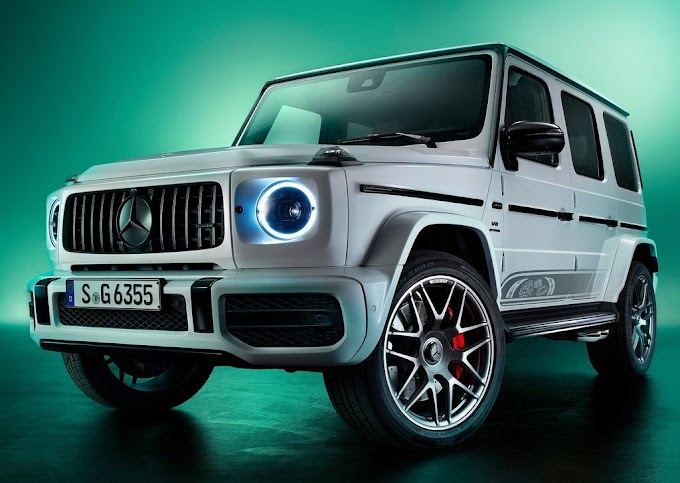The automotive world thrives on surprise, and few moves are as satisfying to enthusiasts as a product revival. The 2026 Jeep Wrangler Moab 392, the surprise first model in Jeep’s year-long "Twelve 4 Twelve" anniversary campaign, is precisely that: a carefully calculated resurrection of the beloved 6.4-liter Hemi V8. Having previously announced the farewell of the V8-powered Wrangler Rubicon 392 in 2024 and 2025, Jeep has now demonstrated a willingness to listen to its most passionate customers. The Moab 392 is not merely a rebadged carryover; it is a strategic repositioning of the V8 Wrangler, offering near-Rubicon capability and premium comfort at a substantially reduced price point. This review analyzes the engineering, market strategy, and overall appeal of this limited-edition powerhouse, concluding that the Moab 392 successfully democratizes the Hemi experience while kickstarting a year of brand celebration.
The Heart of the Beast: Uncompromised Performance
At the core of the Moab 392’s existence is the ferocious 6.4-liter (392 cubic inch) naturally aspirated Hemi V8 engine. For 2026, it retains its original, exhilarating output of 470 horsepower and 470 pound-feet of torque, channeled through a responsive eight-speed automatic transmission. In the context of the Wrangler—a high-riding, solid-axle off-roader—these figures translate to sports-car-rivaling acceleration, launching the SUV from $0$ to $60$ mph in a blistering $4.5$ seconds. This performance not only makes the Moab 392 the fastest Wrangler ever produced but fundamentally changes the vehicle’s personality, transforming it from a robust trail runner into a high-speed desert runner and a pavement bully.
The engineering integration of this engine is notable. The standard fitment includes the functional cold-air intake hood with a water separator, a crucial component for both performance enhancement and water fording capabilities, ensuring the engine remains protected during deep water crossings. Furthermore, the two-mode dual exhaust system—which allows the driver to switch between a subtle rumble and a dramatic, track-ready bark—is integral to the Hemi’s emotional appeal. While the sheer power is intoxicating, the persistent critique remains its efficiency; the V8’s EPA-estimated fuel economy of $13$ mpg city and $16$ mpg highway is, expectedly, a sobering trade-off for such displacement and performance. Nonetheless, for the targeted enthusiast, the Hemi’s visceral soundtrack and overwhelming torque are the primary metrics of success, metrics the Moab 392 delivers on without hesitation.
Strategic Value: The $20,000 Price Adjustment
Perhaps the most significant aspect of the Moab 392 is its strategic market positioning. Priced around $\$81,990$ (including destination fees), it represents a dramatic savings of approximately $\$20,000$ compared to the outgoing 2025 Wrangler Rubicon 392, which frequently crested the six-figure mark. This lower barrier to entry is Jeep’s direct response to enthusiast feedback regarding the engine's prior exclusivity.
Jeep achieved this price reduction not by stripping away essential components, but by strategically redefining the trim level. The Moab 392 is built on the foundation of the previous Rubicon 392 but adopts the “Moab” badge—a historical trim known for blending premium features with trail readiness, sitting slightly below the most extreme Rubicon models in terms of absolute off-road focus. It retains all the core performance hardware that matters:
Drivetrain: Selec-Trac full-time $4\times4$ system with a $2.72:1$ low-range ratio.
Axles: Heavy-duty Dana $44$ wide-track axles.
Differentials: Tru-Lok electronic locking differentials (front and rear).
Capability: Electronic front sway-bar disconnect.
Tires: $35$-inch BFGoodrich All-Terrain T/A $\text{KO}2$ tires on $17$-inch beadlock-capable wheels.
By removing some of the Rubicon 392’s previously standard, yet perhaps non-essential, upscale options (such as the front-mounted Warn winch, which is now optional, and certain interior aesthetic flourishes), Jeep created a clearer value proposition: the customer is paying for the $470$ horsepower and the necessary supporting off-road gear, rather than a full catalogue of luxury extras. This repositioning is a masterful move that keeps the Hemi relevant and attractive in a market increasingly dominated by electrification and four-cylinder forced induction.
Blending Brawn with Urban Polish
The design and interior execution of the Moab 392 successfully bridge the gap between extreme off-roading and daily driving comfort. Externally, the vehicle is distinguished by unique Moab hood decals, black tow hooks, and color-matched body elements, including the body-color three-piece hardtop and mold-in-color fender flares. This cohesive look gives the Moab 392 a more polished, less overtly aggressive aesthetic compared to the raw, contrast-heavy styling of the Rubicon. It suggests a powerful SUV equally capable of tackling Moab's red rocks or navigating city traffic.
The cabin environment elevates the experience significantly. Standard features include heated black Nappa leather-trimmed seats, a premium Alpine sound system, and the latest generation Uconnect $5$ infotainment system displayed on a sharp $12.3$-inch touchscreen with integrated navigation. The inclusion of modern amenities like Adaptive Cruise Control, Blind Spot Monitoring, and an Integrated Off-Road Camera further enhance the vehicle's versatility, mitigating some of the traditional, unrefined nature of the Wrangler platform for daily use. While the platform still dictates a bouncier ride and imprecise steering typical of heavy-duty off-roaders, the interior refinements ensure occupants are enveloped in a degree of luxury previously reserved for dedicated SUVs.
Conclusion and Market Outlook
The 2026 Jeep Wrangler Moab 392 is more than just a special edition; it is a statement. It is Jeep’s firm commitment to internal combustion performance, delivered at a price that significantly improves its value equation relative to its recent predecessors. It provides the essential, intoxicating V8 experience along with the best off-road hardware (Dana $44$s, electronic lockers, $35$-inch tires) while streamlining the option sheet to control the sticker shock. As the first of the "Twelve 4 Twelve" anniversary models, the Moab 392 sets an exceptionally high bar for the limited-edition series to follow, ensuring that the legacy of the Hemi V8 in the Wrangler continues to roar, proving that the reports of its demise were indeed premature. This is a must-have for the enthusiast who missed the original $392$ and demands maximum power without compromising on essential trail capability.























![2026 Kia Sportage [EU] Review: A Refined European Crossover with Bold Style and Electrified Options](https://blogger.googleusercontent.com/img/b/R29vZ2xl/AVvXsEgqMRwJE1m90uCMgRSB6oc4bAzmAaKXJlNoCwavK5fXHaphLYY1sUVXdxUC94zuj95CdjDG2SqRnUBYMqta-dapTLIaHhzEdJAS821ldVMQOKfAZNpQlZ5fYTwKzKbKj8ad9QeKlaQPcNLRZ6zaGvuXhsg1kQ6zQCQqYtjmOM8q9u-a7Nl3WYjp773OLXJR/w680/2026%20Kia%20Sportage%20%5BEU%5D_01.jpg)
0 Comments